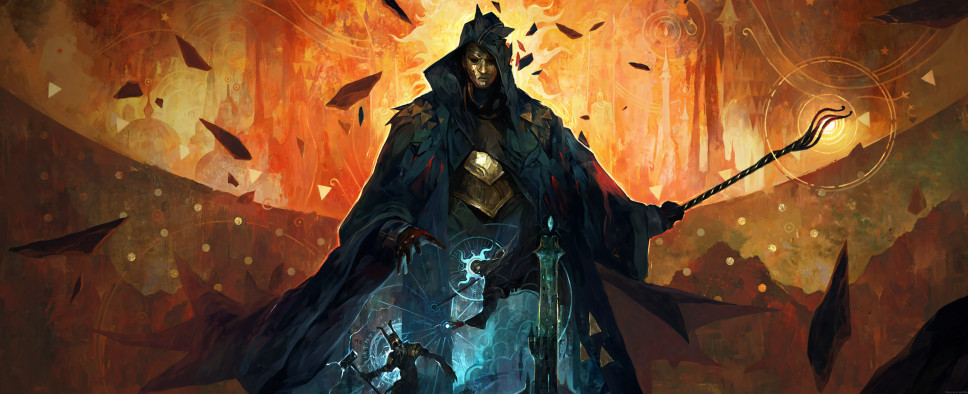SpellForce: Conquest of Eo Review - Page 4
-
Category: ReviewsHits: 19395

Article Index
The one area that could've used a bit more love are the game's narrative sections. The main quest is interesting enough, sure, but the vast majority of side content tends to be rather simplistic.
And that big main quest itself is somewhat incongruent with some of the game's design philosophies. Like how you're incentivized to do multiple playthroughs thanks to the vastly different playstyles and starting locations the game offers. But while that gives you a fresh experience and challenges, all the story events stay exactly the same.
In fact, the game's very map is designed in a somewhat odd way where all the major landmarks and areas are set in stone, and only the random events and points of interest get shuffled around between playthroughs. You do also get a new cast of Circle mages to butt heads with, as there are more of them than fits in a single campaign, and that's a definite plus.
Still, the feeling remains that the game could've used a sandbox mode of some sort allowing you to eschew the big story and instead fine-tune the map's size and features, and maybe the number and identity of your AI opponents. Alternatively, it could offer some tighter custom scenarios for us to tackle.
Conquest of Wonders
As mentioned previously, Conquest of Eo's combat system feels strongly inspired by the Age of Wonders series. It takes place on a hex grid where one side moves its units, and then the other one gets a turn.
Each unit gets three action points, two of which they can use for movement, while the third one has to be spent on an attack or some ability. However, if you forego movement, a unit gets to attack up to three times per turn.
There's also a "paying it forward" retaliation system where units retaliate when attacked in melee, but they do it with action points of their following turn, resulting in them skipping entire turns at times.
Simple on the surface, there's a lot of nuance to Conquest of Eo's battles, with things like elevation, distance, line of sight obstructions, morale, and different damage types and resistances coming into play. The direction a unit is facing is also taken into account, which is always great to see.
Outside of combat, units of different factions have various bonuses, penalties, and skills associated with them. And each unit, except for certain arcane summons, can level up. Doing so, lets you choose between two new abilities randomly picked from a fairly large pool, but once again, these pools differ between units and factions. This results in you getting attached to your troops way more than if they were merely an assembly of set numbers and skills.
Most battles take place in randomized arenas determined by the area you're fighting in. These tend to be generally well-designed and offer a few ways to approach them. But what can be annoying is that whenever you reload, say if you want to retry some battle and refine your tactics for it, you frequently get another arena necessitating an entirely different approach. And that can be doubly frustrating because you can't rearrange your troops before a battle starts.
Whenever you attack a stack of enemies, you get a very general assessment of your chances to win. You also have a convenient auto-resolve button, but sadly, no option to click it, see the proposed results and then decide if you want to keep them or play the battle manually.

